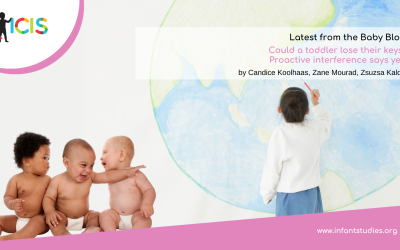by Lisa Oakes
I started my career as an Assistant Professor in 1991. That year Mark Wahlberg formed Marky Mark and the Funky Bunch, the world wide web was launched to the public, and Teenage Mutant Ninja Turtles were all the rage. I was living in Iowa City, a lovely college town with an amazing bookstore, a bakery across the street from the psychology building, and easy parking. It was also overwhelmingly White, which was reflected in the convenience samples I used in my research.
Although NIH asked that we describe our efforts to make our samples more representative, at the time, it was easy for me (and many others) to justify the lack of racial and ethnic diversity in my samples. After all, I lived in a state that was over 95% White, and, more importantly, the assumption was that the kinds of basic visual cognitive processes I studied would not vary as a function of race and ethnicity. If a researcher observed that a sample of 6-month-old infants can remember a face with just 20 seconds of familiarization, we concluded that all 6-month-old infants can remember a face with just 20 seconds of familiarization. Textbooks and research articles (including most of my own) are filled with sweeping statements like “infants can store object identity in visual short-term memory” or “4-month-old infants’ attention is driven by physical salience.” In reality, we’re basing most of what we know about such processes on studies using only infants that are from White, highly educated, and middle-class families.
In fact, we were all so convinced that such information was irrelevant, we didn’t even report details about our samples in published work. Peruse participant sections of journal articles before the year 2000 and you’ll find that information about race, ethnicity, or SES are rarely reported. Unless, of course, the samples were poor, non-White, or non-Western; then additional information was given about these “weird” samples. When cross-cultural work was discussed, findings from Western samples were presented as the standard and the patterns from non-Western samples as interesting deviations, presumably because of factors such as malnutrition or poverty. Remarkably, even in 2010 not all articles reported this information, and even when it was reported, statements like “infants came from predominantly from middle-class White households” were common, and you were left to guess the race and ethnicity of the samples by assuming that the infants were tested in the city where one or more of the authors worked.
Over the years I have become increasingly uncomfortable with these assumptions. One of the fundamental tenets of my research is that the input infants receive drives most of what develops. Several years ago, when I was watching the movie Babies by Thomas Balmès, it struck me how baby Ponijao’s visual input in Namibia differed from baby Mari’s visual input in Tokyo. As depicted in the film, Ponijao had ample opportunity to look off in the distance, viewing the horizon, far-off trees, and people who emerged as tiny specks and became larger as they approached. When Mari, in contrast, looked out the window of her apartment, she was surrounded by high rise buildings directly in front of her. She saw trees in parks of course, but never on the horizon. Although it used to seem implausible that race or ethnicity could influence basic processes like attention and memory, it now seemed quite plausible that a wide range of variables I have always ignored may play an important role in the development of even the most basic processes.
This raises the important question of how much does the existing research on “typical” development in infancy actually reflect how infants around the globe typically develop? My students and I recently faced this issue directly when writing about results of work conducted in Malawi. Our collaborators, who study global nutrition, were puzzled by our discussion of WEIRD (Western Educated Industrialized Rich and Democratic) and non-WEIRD samples. For these scientists, the work is not about WEIRD versus non-WEIRD infants; it’s just about infants. I came to recognize that describing samples as non-WEIRD continues to perpetuate the perspective of Western (mostly White) infants as the standard, and other samples as non-standard.
We need to ensure broader representation in developmental science, not just because it’s fair and equitable, but also because development does depend on experience. Infants’ vision may develop differently as a function of how crowded their visual environment is. The number of people infants see and interact with may shape their face perception. Research has shown how cultural and societal contexts influence language and motor development. It is time we recognize that many aspects of development are likely profoundly influenced by variations in experience. Because so much research has focused on such a narrow range of individuals, we have gained a (perhaps) misleading understanding of the importance of input on basic developmental processes, even processes as fundamental as attention and memory.
An important step in furthering this understanding is to be transparent about who we have studied any time we talk about the results of research. We not only need to describe the characteristics of our own samples (as has been increasingly standard in most journals), but we also need to be clear, if we can, about the subjects of any study we discuss in a chapter, an introduction, or a textbook. Rather than simply writing “infants”, when we mean middle-class infants in North America, we should say “middle-class North American infants”. It will feel awkward until it doesn’t. We need to commit to providing information about any relevant information to characterize the experience of the infants in our sample, including where they live, their SES, and perhaps when the data were collected. We also need to commit to providing such information when describing the research that others have conducted. Being transparent about who we have studied makes it clear that we do not assume that one group—specifically those that are convenient for most developmental scientists to study—are representative of all infants around the globe.
About the Author

Lisa Oakes
University of California, Davis
Lisa M. Oakes is Professor of Psychology and Faculty Researcher at the Center for Mind and Brain at the University of California, Davis. She is the past-President of the International Conference of Infant Studies. Lisa Oakes’s research examines the development of visual cognitive processes, with a particular emphasis on how variations in experience shape those processes. She has recently co-authored with David Rakison a book Developmental Cascades: Building the Infant Mind, published by Oxford University Press, that describes her ideas about how experience and early development have cascading effects on development.




